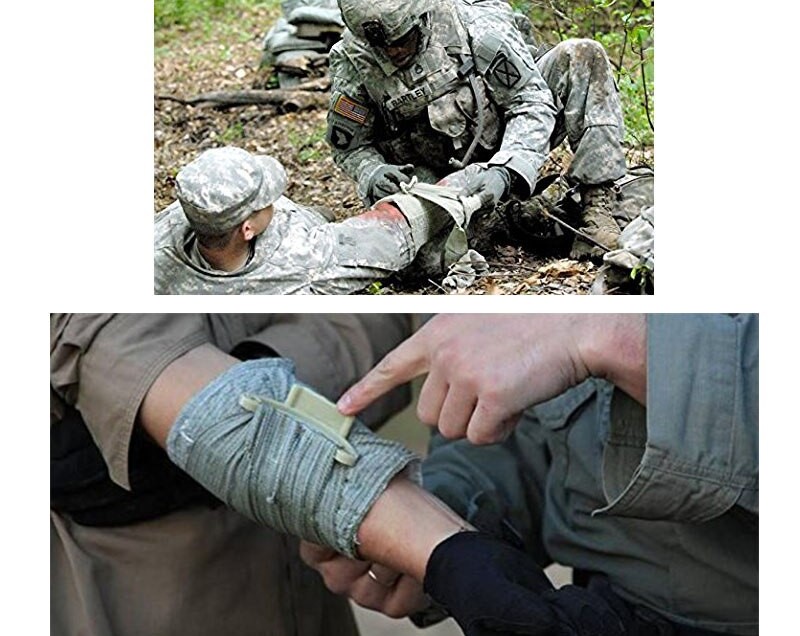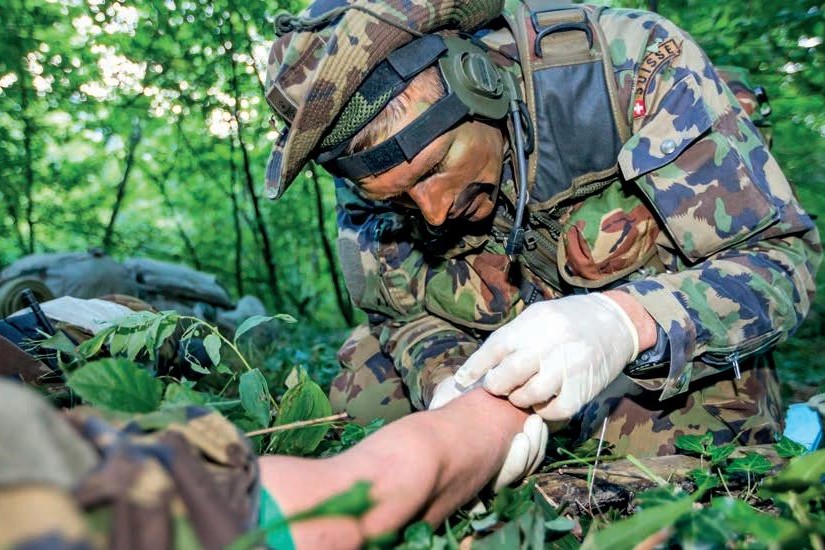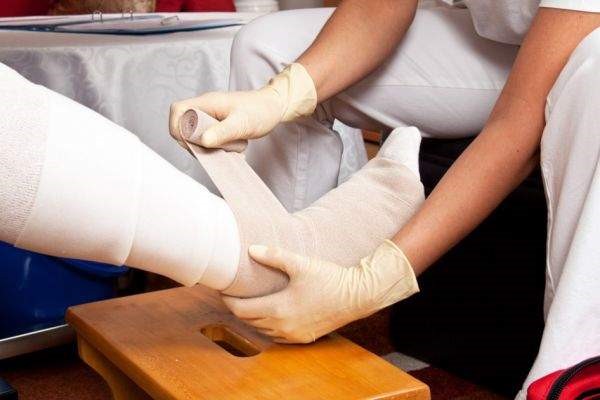
First Aid: How to Use a Compression Bandage
A compression bandage is a type of stretchy bandage that is wrapped around a body part to place pressure on it. It is commonly used in first aid as part of a therapy known as RICE (rest, ice, compression, and elevation)
Compression bandage reduce swelling by restricting blood flow and can also help reduce pain
It is important to know how to use compression bandages correctly so that they are not too tight and end up cutting off circulation.
Compression bandages are typically used to treat sprains and strains.
But, they can also help keep a body part stabilized, such as when there has been a rib fracture.
The bandages may also be used to prevent or treat the build-up of fluid in the lower legs, known as edema.1
This article will discuss how to use compression bandages correctly, mistakes to avoid, and other treatment alternatives.
Compression bandage, Choosing the Right Size
Compression bandages can be anywhere from 2 inches to 6 inches in width. As a general rule, the wider the bandage is, the less likely it will be to cut off circulation.
It is important, therefore, to select the right size for the body part.
By way of example:2
- A 6-inch compression bandage can be used around the chest, torso, or thigh.
- A 3-inch to 4-inch bandage may be suitable for an adult arm or leg.
- A 2-inch bandage may be appropriate for children’s arms or legs, or adult fingers.2
When using a compression bandage, you need to apply the right amount of pressure to prevent swelling and help stabilize the injury
This can be tricky since body parts and the blood vessels that supply them differ in size and shape.
Wrapping a thigh is one thing; wrapping a complex joint like an ankle or wrist is another.
To use a compression bandage on a leg or arm:
- Roll up the bandage if it isn’t already rolled up.
- Hold the bandage so that the start of the roll is facing up.
- Keep the limb in a neutral position.
- Start wrapping at the furthest end of a limb.
- Continue wrapping, overlapping the edges by an inch or so each time you go around.
- When finished, secure the end with clip fasteners or tape.
To use a compression bandage on an ankle:
- Roll up the bandage if it isn’t already rolled up.
- Hold the bandage so that the start of the roll is facing up.
- Keep the ankle at a roughly 90-degree angle.
- Starting near the ball of the foot, wrap the bandage several times and continue wrapping until you reach the heel.
- Leaving the heel exposed, circle the bandage around the ankle.
- Next, circle the bandage in a figure-8 pattern around the arch of the foot.
- The wrap should cover the entire foot from the base of the toes to about 5 or 6 inches above the ankle.
- Secure the end with clip fasteners or tape.
To use a compression bandage on a wrist:
- Roll up the bandage if it isn’t already rolled up.
- Hold the bandage so that the start of the roll is facing up.
- Start at the base of the fingers and wrap the bandage around the hand between the thumb and index finger.
- Continue wrapping around the hand and toward the wrist, overlapping the bandage.
- Circle the wrist several times, ending about 5 to 6 inches above the wrist.
- Secure the end with clip fasteners or tape.
The bandage should be tight enough to feel snug but not so tight as to cause pain, discomfort, numbness, tingling, or cold or blue fingers or toes.
These are signs that the bandage is too tight and needs loosening.2
Do’s and Don’ts
Compression bandages do a good job of keeping the swelling down.
However, there’s a limit to how long you should compress an injury.
At some point, blood flow needs to increase to encourage healing.
Alternatives
Compression bandages are extremely useful but not appropriate for all situations.
There are several alternatives that may be better suited for certain injuries or medical conditions.
For longer-term use, compression wraps may be recommended instead of compression bandages.
These are wider pieces of elastic material usually secured with velcro.
They are designed for larger body parts, such as the chest or thigh, and provide stable, even compression.
There are also tube-like elastic sleeves and compression socks, also designed for longer use.
Self-adherent compression bandages, such as Coban or Dynarex, are bandages that behave like tape but do not stick to the skin.
They can be torn to specific lengths and come in widths ranging from a half-inch to 4 inches.
Self-adherent compression wraps are regularly used in athletics or following a blood draw to provide compression.
They can even be used as a tourniquet.
Gauze wraps are not as springy as an elastic bandage.
They aren’t used as much for compression these days because they tend to slip and lose their shape quickly.
These are better suited to control bleeding or dress open wounds.
A compression bandage is a long strip of stretchable cloth that you wrap around a sprain or strain to apply gentle pressure
By restricting blood flow, swelling and inflammation can be reduced.
This not only promotes healing but helps make the injury feel better.
It is important to use a compression bandage correctly.
This includes choosing the right size and wrapping the body part snugly to apply pressure without cutting off circulation.
A compression bandage generally should be used for only 24 to 48 hours after an injury.
References:
- Urbanek T, Jusko M, Kuczmik WB. Compression therapy for leg oedema in patients with heart failure. ESC Heart Fail. 2020 Oct;7(5):2012–20. doi:10.1002/ehf2.12848
- American Red Cross. American Red Cross first aid/CPR/AED participant’s manual.
- American Academy of Orthopaedic Surgeons. Ankle sprains: what’s normal and what’s not.
Additional Reading
- Hansrani V, Khanbhai M, Bhandari S, Pillai A, McCollum CN. The role of compression in the management of soft tissue ankle injuries: A systematic review. Eur J Orthop Surg Traumatol. 2015 Aug;25(6):987-95. doi:10.1007/s00590-015-1607-4
Read Also:
Emergency Live Even More…Live: Download The New Free App Of Your Newspaper For IOS And Android
Tourniquet And Intraosseous Access: Massive Bleeding Management
Signs And Symptoms Of Shock: How And When To Intervene
Blood Pressure: New Scientific Statement For The Evaluation In People
Will Lower Blood Pressure Reduce The Risk Of Heart And Kidney Diseases Or Stroke?
Rapid Blood-Pressure Lowering In Patients With Acute Intracerebral Hemorrhage
Brain Hemorrhage: Causes, Symptoms, Treatments
First Aid: How To Stop Emergency Bleeding





